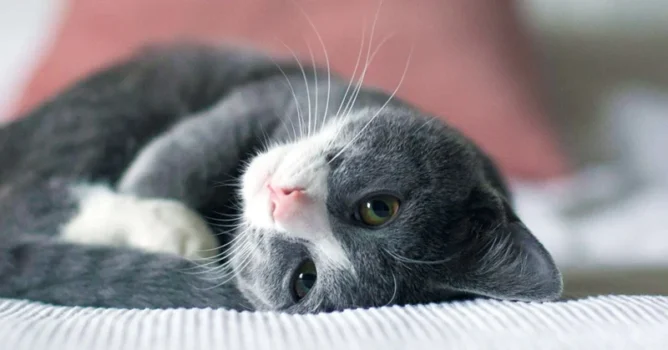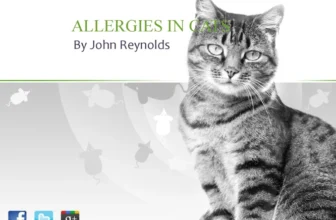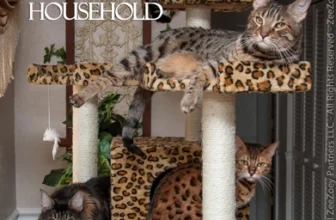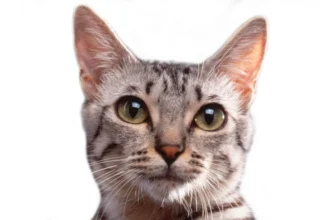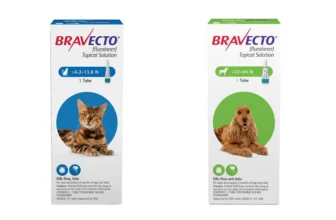It’s a common question among California Spangled cat owners: what vaccines does their feline friend need? Understanding the various vaccinations available for your cat can be overwhelming, but it’s important to ensure their health and protect them from preventable diseases. In this article, we’ll explore the most common vaccines used in California Spangled cat vaccination schedules and answer some of the most frequently asked questions regarding feline vaccinations. So, if you’re ready to learn how to keep your furry friend healthy and happy, let’s dive into the world of cat vaccinations.
Why are Vaccines Essential for California Spangled Cats?
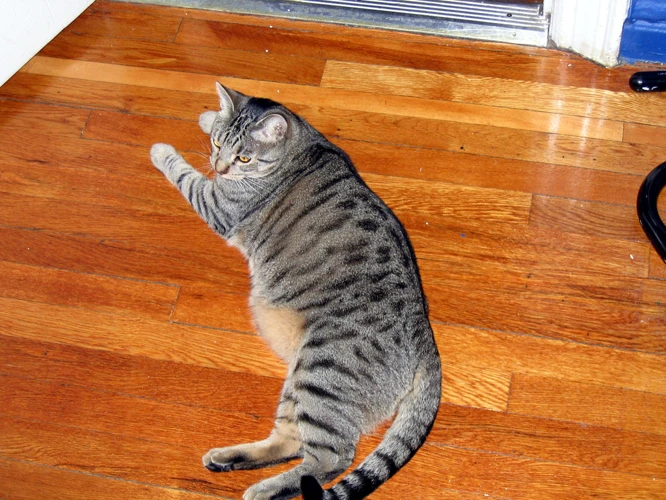
California Spangled Cats are a unique breed of cats that are known for their adventurous nature and high energy levels. To maintain the health and well-being of these cats, it’s essential to adhere to a strict vaccination schedule. Vaccines work by providing immunity against potentially harmful and life-threatening diseases. In California, the use of vaccines is vital to keep the feline population safe from diseases. Vaccination helps to prevent the spread of diseases to other cats and other animals, including humans.
It’s important to note that vaccines for California Spangled Cats aren’t just for their protection but also the protection of other pets in the home and other animals in the community. These vaccines are essential to reduce the chances of contracting serious and deadly illnesses. If a California Spangled Cat isn’t vaccinated, they’re at risk of being infected with diseases that may cause significant health problems, such as leukemia virus and rabies. These infections could lead to serious illness, which would be costly to treat and could be fatal if left untreated.
Vaccines are an essential part of California Spangled Cat’s overall health and wellness. They work by stimulating the immune system to produce antibodies that help fight off infections. Vaccination is necessary to prevent outbreaks of diseases in the feline population, which can become a problem if left unchecked.
In California, there are several vaccines used in California Spangled Cat vaccination schedules. These include Feline Panleukopenia, Feline Viral Rhinotracheitis, Calicivirus, Feline Leukemia Virus, and Rabies. Each of these vaccines provides protection against specific diseases that could put the cats at risk.
It’s important to remember that vaccination is not a one-time process, and it requires adherence to a strict schedule. Regular booster doses are required to maintain immunity and keep the cats healthy. Additionally, it’s essential to note that vaccines come with risks, including allergic reactions.
To sum up, vaccines are essential for California Spangled Cats to maintain good health and protect their feline friends. The California Spangled Cat vaccination schedules help prevent the spread of deadly diseases and keep all pets and animals in the community healthy. It’s a crucial part of being a responsible pet parent as well as being a responsible member of the community. To learn more about vaccination schedules and why vaccination is crucial for California Spangled Cats, visit this link.
What are California Spangled Cats?
It’s possible that you haven’t heard of California Spangled Cats before. These cats are a rare breed that was first developed in the 1980s. They were created by a conservationist, Paul Casey, who wanted to draw attention to the problem of wild cat extinction. California Spangled Cats have wild cat looks, with spots and big ears, but they are friendly and domesticated. As with all cats, proper health care is important, including vaccination. In the following sections, we will delve into the world of California Spangled Cat vaccination and learn about common vaccines used and when to administer them. If you want to learn more about vaccination in this rare breed, continue reading or check out our article on Ca Spangled Cat Vaccination.
Why are Vaccines Important for Them?
California Spangled cats, like all pets, are susceptible to a variety of infectious diseases that can cause serious health problems and even be fatal. Vaccines are essential for California Spangled cats to protect them from various illnesses and diseases, keeping them healthy and happy. Vaccines work by stimulating the cat’s immune system to produce antibodies that can fight off specific diseases.
In addition to protecting the individual cat, vaccines are important for the overall health of the cat population and the community as a whole. By reducing the incidence of infectious diseases, vaccines also reduce the chances of disease outbreaks, which can be costly in terms of both human and feline lives.
Here are some of the reasons why vaccines are so important for California Spangled cats:
- Vaccines can prevent serious, life-threatening illnesses
- Vaccines help protect against diseases that are highly contagious and easily spread
- Vaccines can protect cats against diseases that have no cure
- Vaccines can prevent certain diseases that can be transmitted to humans
- Cat vaccination can prevent the spread of diseases from cats to other animals
It’s important to note that vaccines are not a guaranteed protection against disease. However, they are the best way to reduce the risk of illness, and this is why vaccination is strongly recommended for all cats, including California Spangled cats.
Additionally, vaccine protocols are constantly evolving, and recommendations may change as more research is conducted on different diseases. It’s therefore important to keep up to date on the latest recommendations and to work closely with a qualified veterinarian to devise a vaccination schedule that is appropriate for your California Spangled cat’s particular needs.
To learn more about California Spangled cat vaccination, vaccination schedules, and the associated costs, check out our article on California Spangled Cat Vaccination.
How do Vaccines Work in California Spangled Cats?
Vaccines work by exposing the California Spangled cat’s immune system to a small amount of the virus or bacteria that causes the disease. This exposure allows the immune system to recognize and remember the disease-causing agent so that it can quickly respond and fight off an infection if the cat is exposed to the disease in the future.
Vaccines stimulate the production of antibodies that work by recognizing and attaching to the virus or bacteria if it enters the cat’s body. Once attached, the antibodies signal to other immune cells to destroy the invader.
When the cat receives a vaccine, it is usually injected with a modified or inactivated form of the virus or bacteria that causes the disease. This modification ensures that the virus or bacteria cannot cause the disease but is still capable of stimulating an immune response. For example, the Feline Viral Rhinotracheitis (FVR) vaccine contains a modified strain of the feline herpes virus that causes respiratory infections in cats.
It’s important to note that vaccines do not provide immediate protection. It takes time for the cat’s immune system to build up immunity after a vaccine is administered. This is why it’s essential to follow the recommended vaccination schedule for California Spangled cats.
Regular vaccination protects not only your California Spangled cat but the entire cat community. Vaccinated cats help reduce the number of disease outbreaks, making it less likely for unvaccinated cats to become exposed.
To learn more about California Spangled cat vaccination, check out our article on California Spangled cat vaccination.
What are the Common Vaccines Used in California Spangled Cat Vaccination Schedules?

California Spangled cats are no different from other cat breeds when it comes to vaccination. Vaccination is essential for their overall health and well-being. Vaccination helps California Spangled cats to maintain their immunity against various viruses and bacterial infections.
The California Spangled cat vaccination schedule includes several vaccines that are known to protect against the most common fatal feline diseases. These vaccines are:
Feline Panleukopenia (FPV):
Also known as feline distemper, FPV is a highly contagious viral disease that can cause severe symptoms such as vomiting, diarrhea and dehydration. FPV can be fatal if left untreated. California Spangled cats are usually vaccinated against FPV when they are six to eight weeks old.
Feline Viral Rhinotracheitis (FVR):
FVR is a common viral disease that affects the respiratory system of cats. It is highly contagious and can cause severe symptoms such as nasal discharge, coughing, and sneezing. FVR can also cause secondary infections leading to pneumonia. California Spangled cats are usually vaccinated against FVR when they are six to eight weeks old.
Calicivirus (FCV):
Calicivirus is another common viral infection that affects the respiratory system of cats. It can cause symptoms such as fever, coughing, and discharge from the eyes and nose. In some cases, calicivirus can also cause ulcers in the mouth and tongue. California Spangled cats are usually vaccinated against calicivirus when they are six to eight weeks old.
Feline Leukemia Virus (FeLV):
FeLV is a viral disease that affects the immune system of cats. It can lead to numerous symptoms such as fever, lethargy, anemia, and weight loss. FeLV can also cause secondary infections such as respiratory and urinary tract infections. California Spangled cats are usually vaccinated against FeLV when they are eight to ten weeks old.
Rabies:
Rabies is a viral disease that can affect all mammals, including humans. It is transmitted through the bites of infected animals, and there is no cure for Rabies once symptoms start to appear. California Spangled cats are usually vaccinated against Rabies when they are four months old.
Vaccination is an essential step in maintaining the health of California Spangled cats. Pet owners should follow the recommended vaccination schedules to ensure that their cats are protected against these deadly diseases.
For more information on California Spangled cat vaccinations, visit our website page on CA Spangled Cat Vaccinations.
Feline Panleukopenia (FPV)
Feline Panleukopenia, also known as feline distemper, is a highly contagious viral disease that affects cats. The virus attacks rapidly dividing cells in the cat’s body, which can lead to severe gastrointestinal, immune, and nervous system issues. This virus is prevalent in unvaccinated cats, making it crucial for California Spangled cats to receive appropriate vaccination against FPV to ensure their protection. Vaccination against FPV is an essential component of the California Spangled cat vaccination schedules to keep your furry friend healthy and happy. Let’s explore more about FPV, its symptoms, and its vaccine.
Feline Viral Rhinotracheitis (FVR)
Feline Viral Rhinotracheitis (FVR) is caused by a herpesvirus that attacks a California Spangled Cat’s respiratory system. This virus spreads through contact with an infected cat’s saliva, nasal discharge, or tear drops.
What are the Symptoms of FVR?
When a California Spangled Cat has contracted FVR, it may experience mild to severe symptoms, such as:
- Sneezing
- Coughing
- Runny nose and eyes
- Eye ulcers
- Fever
- Lethargy
In severe cases, FVR can cause pneumonia and other respiratory problems that can pose a threat to a California Spangled Cat’s life.
Can FVR Be Treated?
Sadly, there is no known cure for FVR, but the symptoms can be managed with medication. Antibiotics may be prescribed to combat bacterial infections, while antiviral drugs can help to alleviate the symptoms of the virus.
Preventing FVR With Vaccination
While FVR is highly contagious and can cause severe health issues in California Spangled Cats, it is preventable through vaccination. A vaccine specifically designed to prevent FVR is routinely included in California Spangled Cat vaccination schedules.
The FVR vaccine, which is a part of the FVRCP combination vaccine, is administered in a series of shots to cats under a year old and as booster shots for adult cats.
If you want to learn more about the California Spangled Cat vaccination, including other common vaccines and when to administer them, you should visit our dedicated California Spangled Cat vaccination article.
Calicivirus (FCV)
Calicivirus (FCV) is another common vaccine used in California Spangled Cat vaccination schedules. This virus is highly contagious and easily contracted in environments where there are groups of cats, such as shelters or boarding facilities. It is vital to vaccinate your California Spangled Cat against this virus to prevent serious illnesses.
The Calicivirus vaccine is designed to protect your cat from several strains of the virus. The vaccine works by training your cat’s immune system to recognize the virus and create antibodies to attack it. In case your cat is later exposed to Calicivirus, their body will be prepared to fight off the virus and avoid getting sick.
Symptoms of Calicivirus in cats include sneezing, runny nose, conjunctivitis, mouth ulcers, and difficulty eating. In some cases, it can progress to pneumonia, which can be life-threatening.
It is important to note that not all cats need the Calicivirus vaccine. If your cat is strictly indoors and not exposed to other cats, they may not need the vaccine. However, if your California Spangled Cat has any outdoor access or socializes with other cats, it is recommended to have them vaccinated against Calicivirus.
The Calicivirus vaccine is typically administered as part of a combo vaccine with FVR and FPV, called the “FVRCP” vaccine. This vaccine is considered a core vaccine, meaning it is necessary for all cats to receive in their vaccination schedule.
After receiving the Calicivirus vaccine, your cat may experience some mild side effects, such as soreness at the injection site, lethargy, or a mild fever. These side effects are normal and usually go away within a day or two. However, if your cat experiences any severe or prolonged side effects, it is important to contact your veterinarian immediately.
Vaccinating your California Spangled Cat against Calicivirus is crucial in keeping them healthy and protected from this highly contagious virus. Make sure to discuss your cat’s vaccination schedule with your veterinarian to determine the best plan for their individual needs.
Here are some facts about Calicivirus:
- Calicivirus (FCV) is highly contagious among cats and can spread rapidly in environments where there are groups of cats, such as shelters or boarding facilities.
- The Calicivirus vaccine is designed to protect your cat from several strains of the virus.
- The Calicivirus vaccine is typically administered as part of a combo vaccine with FVR and FPV, called the “FVRCP” vaccine.
- Not all cats need the Calicivirus vaccine. If your cat is strictly indoors and not exposed to other cats, they may not need the vaccine.
- Vaccinating your California Spangled Cat against Calicivirus is crucial in keeping them healthy and protected from this highly contagious virus.
Feline Leukemia Virus (FeLV)
Feline Leukemia Virus (FeLV) is another important vaccine for California Spangled Cats. This virus is particularly common in stray cats and cats living in multi-cat households. FeLV can cause anemia, cancer, and other fatal diseases in cats. Vaccinating against FeLV is crucial to ensure the health and overall well-being of your feline friend.
The FeLV vaccine works by inducing the production of antibodies that can neutralize the virus. This vaccine is typically administered in two doses, a few weeks apart, and then a booster vaccination is needed annually. The timing of this vaccine is key, as it is recommended to administer the vaccine before your cat is exposed to a source of infection.
Some potential side effects of the FeLV vaccine include lethargy, soreness at the injection site, and an allergic reaction. It is important to keep an eye on your cat after vaccinations, and to contact your veterinarian if you notice any concerning symptoms.
It is also important to note that while the vaccine is highly effective, it is not a guarantee against infection. FeLV can still be contracted even after vaccination, so it is important to test cats for the virus and keep them away from infected cats.
Vaccinating your California Spangled Cat against FeLV is an important step in ensuring their long-term health. Consult with your veterinarian to determine if this vaccine is appropriate for your cat and to create a vaccination schedule.
Some additional information about FeLV vaccine:
- The FeLV vaccine should not be administered to pregnant cats
- Cats at a higher risk of FeLV exposure, such as those who go outdoors or live with infected cats, should be vaccinated
- The vaccine is generally safe for cats, but it is important to notify your veterinarian of any pre-existing medical conditions or medications your cat is taking
Rabies
Rabies is a highly contagious viral disease that affects all mammals, including cats and humans. According to the American Veterinary Medical Association, rabies is a fatal disease that can lead to death if not treated promptly after exposure. Vaccinating your California Spangled cat against rabies is essential for its wellbeing and the safety of your family.
Rabies Vaccine
The rabies vaccine is a mandatory vaccination in most states, including California. It is a core vaccine that every cat owner should consider as it is highly effective in preventing the spread of the disease. Here is a table that provides more information about the rabies vaccine.
| Vaccine Name | Immunization | Dosage | Frequency |
| Rabies Vaccine | Active immunization against the rabies virus | 1 ml | Annually or every three years depending on vaccine type and state laws |
Why is the Rabies Vaccine Important for California Spangled Cats?
Rabies is a fatal disease that can quickly spread to other animals and humans. California Spangled cats are curious creatures that love to explore their surroundings. They may come in contact with wild animals, such as raccoons, skunks, and bats, that may be carriers of the virus. Infection with the rabies virus can lead to severe neurological damage, aggressive behavior, and death. Vaccinating your California Spangled cat against rabies is crucial for its safety and the people around it.
When to Vaccinate Against Rabies?
Kittens should receive their first rabies vaccine when they are around 12 to 16 weeks old. However, the age may vary depending on the state law and your veterinarian’s advice. The vaccine’s effectiveness lasts for one year after the initial vaccination, after which revaccination is required. California state law mandates that cats receive a rabies vaccine every year. However, some states allow the use of three-year vaccines. It’s essential to consult with your vet about the appropriate vaccine type and frequency, depending on your state’s laws.
What are the Risks Associated with the Rabies Vaccine?
The rabies vaccine is generally safe, and adverse reactions are rare. Mild reactions, such as lethargy, fever, and reduced appetite, may occur after vaccination. Severe reactions, such as hives, vomiting, and anaphylactic shock, are uncommon. However, it is crucial to monitor your cat and report any unusual symptoms to your veterinarian promptly.
Vaccinating your California Spangled cat against rabies is necessary for its safety and the safety of others. Make sure to consult with your veterinarian about the appropriate vaccination schedule and understand the state law’s requirements regarding rabies vaccination.
When to Administer Vaccines to California Spangled Cats?
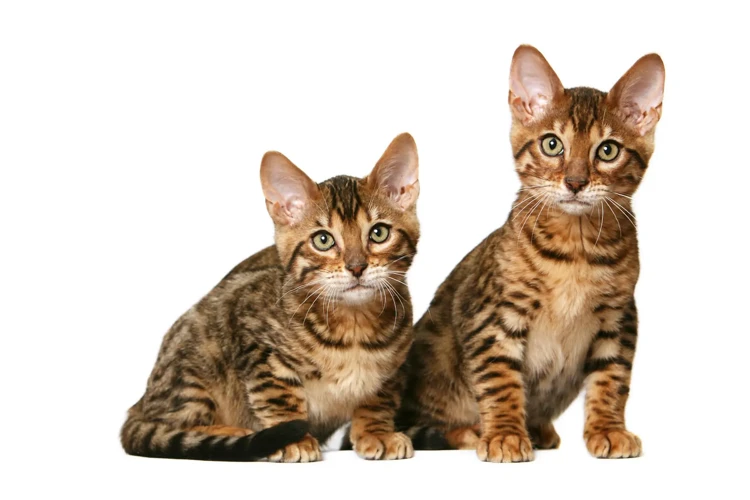
Administering vaccines to California Spangled cats is a crucial aspect of maintaining their health and well-being. However, it’s important to follow a proper vaccination schedule to ensure the effectiveness of the vaccines and keep our feline friends safe from harmful diseases.
When to Start Vaccination?
Vaccination of California Spangled cats should begin when they are about 6 to 8 weeks old. At around this age, their immune system is developing, and they become more vulnerable to diseases. The first vaccine administered is usually for feline panleukopenia, which is a highly contagious viral disease.
How Often to Vaccinate?
After the initial vaccine, California Spangled cats need regular boosters to maintain their immunity against various diseases. Typically, vaccines are administered in three-week intervals until the kitten is 16 weeks old. Afterward, they will require annual booster shots to ensure continued immunity throughout their lives.
What are the Exceptions to the General Vaccination Schedule?
In some situations, vaccination schedules may need to be modified. For example, kittens coming from a high-risk environment, such as a shelter with multiple cats, or a household with a sick cat, may require more frequent vaccines. Additionally, adult California Spangled cats who have not received regular vaccines or whose vaccine history is unknown may require a series of booster shots to establish immunity, depending on their past vaccinations.
When is it Better to Wait for Vaccination?
In some cases, California Spangled cats may not be able to receive vaccines due to medical concerns such as illness or allergies. In such situations, it’s best to consult with a veterinarian to determine when it’s safe to administer the vaccine. Vaccines are crucial, but it’s important to prioritize the cat’s health and well-being above all else.
When Should Vaccines be Avoided?
Pregnant or nursing California Spangled cats should avoid vaccination unless they are necessary for the prevention of severe illness or disease. In such cases, it’s best to consult with a veterinarian to determine the appropriate vaccine dosage and timing.
Final Thoughts
Vaccines are essential for maintaining the health and longevity of our beloved California Spangled cats. Following a proper vaccination schedule is crucial to ensure the effectiveness of the vaccines and keep our feline friends safe from harmful diseases. It’s essential to consult with a veterinarian to determine the appropriate vaccine dosage and timing to keep our cats healthy and happy for years to come.
When to Start Vaccination?
As a responsible California Spangled cat owner, it’s essential to understand when to begin vaccinating your furry friend. Vaccinations are an integral part of the cat’s healthcare routine, as they help protect them against harmful and potentially deadly diseases. But when should you start vaccinating your California Spangled cat? The answer is not as simple as you might think and requires careful consideration of several important factors. Let’s delve into the details and explore when you should start vaccinating your furry friend.
How Often to Vaccinate?
Determining the frequency of vaccination for California Spangled Cats is an essential aspect of their healthcare routine. Vaccines protect cats from life-threatening diseases, but over-vaccination can lead to adverse health effects. The vaccination guidelines recommend revaccination for core vaccines and non-core vaccines at different intervals.
Below is a table outlining the recommended vaccination intervals for California Spangled Cats:
| Vaccine | Revaccination Schedule |
|---|---|
| Feline Panleukopenia (FPV) | Every 3 years |
| Feline Viral Rhinotracheitis (FVR) | Every 3 years |
| Calicivirus (FCV) | Every 3 years |
| Feline Leukemia Virus (FeLV) | Annually for outdoor cats; depending on the cat’s lifestyle and risk for exposure |
| Rabies | Every 3 years or according to state and local laws. |
California Spangled Cats should receive their initial set of vaccines as kittens, following which regular booster shots should be given to maintain immunity. Consultation with a veterinarian can be helpful in establishing a vaccine schedule that suits your cat’s individual needs, taking into account their health history and lifestyle.
It’s important to note that the frequency of vaccination can vary depending on the cat’s age, health condition, and exposure risk. Any changes to the vaccination schedule should be discussed with a professional vet. Over-vaccination can cause adverse effects, but under-vaccination can leave your cat vulnerable to serious diseases. Striking a balance in their vaccination schedule is necessary to keep your furry friend healthy and happy.
What are the Risks Associated with Vaccination?

Vaccine Risks and Side Effects for California Spangled Cats
Vaccination is an important part of ensuring the health and well-being of your California Spangled cat, but like any medical procedure, it does carry some risks and potential side effects. It’s important to be aware of these risks and to discuss them with your veterinarian so that you can make informed decisions for your feline companion.
Common Side Effects of Vaccination
Fortunately, most cats experience no serious side effects from vaccines, and any side effects that do occur are usually mild and temporary. The most common side effects of vaccination for California Spangled cats include:
– Mild fever or lethargy
– Decreased appetite
– Redness, swelling, or pain at the injection site
– Sneezing or nasal discharge
– Mild gastrointestinal symptoms, such as vomiting or diarrhea
These side effects typically occur within a few hours to a few days after vaccination and usually resolve on their own without medical treatment. However, if your California Spangled cat experiences more serious side effects, such as difficulty breathing, hives, or a severe allergic reaction, you should seek immediate veterinary care.
How to Protect Your California Spangled Cat from Vaccine Side Effects?
There are a few things you can do to help protect your California Spangled cat from vaccine side effects. First, make sure that your cat is in good health before getting vaccinated, as underlying health problems can increase the risk of side effects. Try to schedule vaccinations at a time when you can monitor your cat for a few days afterward in case any side effects occur.
You can also talk to your veterinarian about using a vaccine that has been shown to have lower rates of side effects, or about adjusting the vaccine schedule to minimize the risk of side effects. Finally, keep an eye on your cat’s symptoms and behavior after vaccination so that you can identify any potential side effects early and seek veterinary care if necessary.
In Conclusion
While vaccination does come with some risks and potential side effects, the benefits of protecting your California Spangled cat from serious and potentially deadly diseases far outweigh these risks. By working with your veterinarian to develop an appropriate vaccination schedule and taking steps to minimize the risk of side effects, you can help keep your feline companion healthy and happy for years to come.
Common Side Effects of Vaccination
While vaccination is crucial for protecting your California Spangled cat from serious diseases, it’s important to be aware of the potential side effects that might occur. As with any medical procedure, there is always a risk of side effects, ranging from mild to severe. Some common side effects of vaccination include mild fever, lethargy, loss of appetite, and localized swelling at the injection site. It’s essential to learn about these potential side effects, so you can monitor your cat’s health and take the necessary steps to ensure their well-being.
How to Protect Your California Spangled Cat from Vaccine Side Effects?
Vaccinations are a crucial aspect of keeping your California Spangled cat healthy and free from infectious diseases. However, like any medical treatment, vaccines can have side effects. As a loving cat owner, you should take measures to minimize the risks associated with vaccines. Here’s how to protect your feline friend from vaccine side effects:
- Choose a reputable vet: One of the most effective ways to ensure that your California Spangled cat is protected from vaccine side effects is to choose a reputable veterinarian. You should opt for a vet who has experience administering vaccines and who follows the appropriate protocols for vaccination. Ask for recommendations from fellow cat owners in your area or conduct research online to find a reputable vet.
- Monitor your cat after vaccination: Keep a close eye on your California Spangled cat for any signs of a reaction to the vaccine. Symptoms may include lethargy, loss of appetite, fever, and swelling at the injection site. If you notice any of these symptoms, contact your veterinarian immediately. Early intervention can prevent potentially serious side effects.
- Provide comfort: After your cat has received a vaccine, provide them with a comfortable and quiet place to rest. Keep them indoors and away from other animals for at least 24 hours to minimize their exposure to potential infections. Ensure that they have access to plenty of fresh water and food to aid in their recovery.
- Don’t vaccinate your cat if they are unwell: If your California Spangled cat is currently unwell or undergoing treatment for a medical condition, it’s best to postpone their vaccination until they are fully recovered. Vaccinating a sick cat can put undue stress on their immune system and exacerbate their illness.
- Consider a vaccine detox: If you are worried about potential vaccine side effects, you may want to consider a vaccine detox. A detox can help flush out any toxins from your cat’s body and improve their overall health. Consult with your vet to see if a vaccine detox is appropriate for your cat.
By taking these precautions, you can help protect your California Spangled cat from potential vaccine side effects and keep them healthy and happy. Remember, vaccines are an essential aspect of cat care, but they should always be done responsibly and with your cat’s health in mind.
How Much Does Vaccination Cost for California Spangled Cats?
As with any medical care, the cost of vaccination for California Spangled cats can vary depending on a number of factors. The cost typically depends on the type of vaccine, the number of vaccines that need to be administered, the location of the veterinary clinic, and any additional fees associated with the visit.
The Cost of Each Vaccine
The cost of each vaccine can vary depending on the region and the veterinary clinic. On average, the cost of Feline Panleukopenia (FPV) vaccine is about $20 to $35, Feline Viral Rhinotracheitis (FVR) vaccine is about $20 to $35, Calicivirus (FCV) vaccine is about $20 to $35, Feline Leukemia Virus (FeLV) vaccine is about $50 to $100, and the Rabies vaccine is around $15 to $25 per dose.
Additional Fees to Expect
In addition to the cost of the vaccines themselves, there may be additional fees to expect when getting your California Spangled cat vaccinated. These fees often vary, depending on the veterinary clinic that you visit and the services they offer. Some of the most common additional fees include the cost of an office visit, which can range from $30 to $50 or more, depending on the location and the clinic. There may also be additional fees for diagnostic tests, which are sometimes required before the vaccine can be administered, and other medical services.
It is highly recommended that you call and compare different veterinary clinics in your area to find the best prices and options for your California Spangled cat’s vaccination schedule. Additionally, you can also inquire about discounts for multiple vaccines or for multi-pet households, which can help to lower the cost of vaccination.
Don’t forget, while the cost of vaccination can vary, it is an essential investment in your cat’s health and well-being. Providing your California Spangled cat with proper vaccination protection is one of the best ways to keep them safe and healthy for many years to come!
The Cost of Each Vaccine
One important aspect to consider when it comes to vaccinating your California Spangled cat is the cost of each vaccine. The cost can vary depending on the type of vaccine required and where you receive the vaccination. As a responsible pet owner, it’s essential to be informed about the cost of each vaccine to ensure you can properly budget for your feline friend’s health needs. So, how much can you expect to pay for each vaccine? Let’s take a closer look.
Additional Fees to Expect
It’s important to note that besides the cost of the vaccines themselves, there may be additional fees to expect when vaccinating your California Spangled cat. These fees can vary depending on where you go for the vaccination and what services are offered. Below is a breakdown of common additional fees to keep in mind:
| Additional Fee | Description | Cost Range |
|---|---|---|
| Veterinary Exam Fee | A fee for the physical examination required before vaccination. | $35-$75 |
| Office Visit Fee | A fee charged by the veterinary clinic for every visit. | $0-$50 |
| Non-Core Vaccine Fee | A fee for vaccines that aren’t considered essential by the American Association of Feline Practitioners. | $15-$45 per vaccine |
| Flea and Tick Treatment | A fee for preventative flea and tick treatments that are often recommended during a veterinary visit. | $50+ |
| Lab Work | A fee for laboratory tests that may be required for cats with a history of illness or previous vaccination reactions. | $20-$200+ |
It’s important to budget for these additional fees when planning your California Spangled cat’s vaccination schedule. Some veterinary clinics may offer bundled vaccination packages that include some of these additional fees, so it’s worth asking about any special offers. Remember, the cost of vaccination and associated fees is a small price to pay to keep your furry friend healthy and protected from disease.
Conclusion
In conclusion, vaccination is an essential part of ensuring the good health and well-being of your California Spangled Cat. By administering the appropriate vaccines at the right time and frequency, you can protect your furry feline friend from a range of deadly and debilitating diseases.
Why are vaccines important? Vaccines work by triggering the immune system to create antibodies that can recognize and fight off specific diseases. Without vaccination, California Spangled Cats can become vulnerable to a range of infectious diseases that can lead to serious health issues, including death.
Common vaccines: The most common vaccines used in California Spangled Cat vaccination schedules include Feline Panleukopenia (FPV), Feline Viral Rhinotracheitis (FVR), Calicivirus (FCV), Feline Leukemia Virus (FeLV), and Rabies. Each of these vaccines protects against different diseases and illnesses that can affect your cat.
When to administer vaccines: Vaccination schedules should be determined based on the age, health, and lifestyle of your California Spangled Cat. Generally, kittens should begin receiving vaccinations at around six to eight weeks of age, with boosters given at regular intervals over the first year of their life.
Risks associated with vaccination: While the benefits of vaccination far outweigh the risks, there are potential side effects to be aware of, including fever, loss of appetite, and lethargy. However, these side effects are typically mild and short-lived, and can be managed with proper care and attention.
Cost of vaccination: The cost of vaccination for California Spangled Cats can vary depending on a range of factors, including the type of vaccine being administered, the frequency of boosters, and any additional fees associated with veterinary care.
Overall, as a responsible pet owner, it is important to prioritize your California Spangled Cat’s health and well-being by keeping up with their vaccination schedule. By working with a qualified veterinarian, you can ensure your furry friend receives the care and attention they need to live a happy and healthy life.
Frequently Asked Questions
1. Can my California Spangled cat get diseases even after receiving vaccinations?
While vaccines are designed to protect your cat from various illnesses, there is never a guarantee that your cat won’t contract a disease. However, if your cat does become infected with a disease it has been vaccinated for, the illness is often less severe and the recovery period may be shorter.
2. How long does the immunity from a vaccine last for California Spangled cats?
The length of immunity varies depending on the vaccine, but most vaccines provide protection for one to three years. It’s important to follow your veterinarian’s recommended vaccination schedule to ensure your cat stays protected.
3. Can I skip certain vaccines for my California Spangled cat?
While some vaccines may not be required by law, it’s important to discuss with your veterinarian which vaccines are necessary based on your cat’s lifestyle and the prevalence of certain diseases in your area.
4. Are vaccines safe for California Spangled cats?
The benefits of vaccines outweigh the risks for most cats. However, like any medical procedure, there are potential risks and side effects. It’s important to discuss any concerns with your veterinarian.
5. Can my California Spangled cat get vaccinated if it is pregnant or nursing?
It’s generally not recommended to administer vaccines to pregnant or nursing cats, as the safety of vaccines during these periods has not been fully studied. Consult with your veterinarian for specific recommendations regarding your cat’s vaccination schedule.
6. What should I do if my California Spangled cat experiences side effects from vaccines?
If your cat experiences a mild reaction to a vaccine, such as lethargy or soreness at the injection site, monitor them closely for any changes. If more severe symptoms occur, such as vomiting or difficulty breathing, seek veterinary care immediately.
7. Can my California Spangled cat still be vaccinated if it has a history of allergic reactions?
Repeated vaccination may worsen allergic reactions in some cats. It’s important to discuss your cat’s medical history with your veterinarian to determine the best course of action.
8. What if I have multiple California Spangled cats at home with different vaccination schedules?
It’s important to keep track of each cat’s individual vaccination schedule to ensure they are all protected. Your veterinarian can provide guidance on how to manage multiple vaccination schedules.
9. What if I miss a scheduled vaccination for my California Spangled cat?
If you miss a scheduled vaccination, consult with your veterinarian on the best course of action. Depending on the vaccine and the timing, your cat may need to restart the series or just receive a booster shot.
10. Can I give my California Spangled cat over-the-counter vaccines?
No, over-the-counter vaccines are not recommended and may not be effective in protecting your cat against certain diseases. It’s important to work with your veterinarian to ensure your cat receives the appropriate vaccines.

